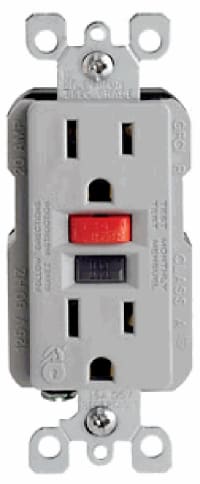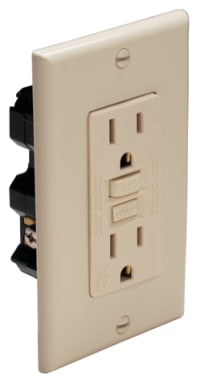Understanding GFCI Breakers Onboard
 Are GFCI Breakers Required on My Boat?
Are GFCI Breakers Required on My Boat?
While we are all used to seeing GFCI breakers in our homes – you may not know exactly what they do and why they are now required on all new boats being built. Below, we explain what a Ground Fault Circuit Interrupter (GFCI) does, and why they are one of the important electrical safety features on your boat.
First off – let's take a look at the requirements. ABYC (American Boat and Yacht Council) regulation #E-13.3.5 states:
“If installed in a head, galley, machinery space, or on a weather deck, the receptacle shall be protected by a Type A (nominal 5 milliamperes) Ground Fault Circuit Interrupter (GFCI).”
While this ABYC requirement only applies to the construction of new boats, adding GFCI breakers to any boat is not only smart, it could save your life!
What is a GFCI?
Ground Fault Circuit Interrupters (GFCIs) are fast-acting circuit breakers that interrupt the flow of AC current through an unintended ground fault (short circuit). The most common type of GFCI looks like a modified duplex electrical receptacle, and is used in place of one. It operates by sensing any difference in the electric currents carried by the hot and neutral conductors of a device plugged into the receptacle. The GFCI makes sure that the current flowing in is the same as that flowing out. If the current is imbalanced, it means that electricity is going somewhere else – like through you.
GFCIs can be installed in place of ordinary receptacles, in which case they protect that outlet as well as any outlets installed “downstream” of it. They are typically installed in locations where damp conditions are common and may provide a pathway to ground – the galley and the head are the two big ones on a boat – along with any outdoor electric outlets potentially exposed to the weather.
What Exactly is a Ground Fault?
A “ground fault” is an unintentional electric path between a source of current and a grounded surface. If you touch a non-insulated portion of the hot or neutral wire (or something connected to it) while also creating a low resistance conductive pathway to “ground” (a ground fault), the current in the conductors will no longer be equal since the current will preferentially flow through the fault instead of the wire – potentially causing you to be burned, severely shocked or even electrocuted.
For example: you plug in an electric tool or appliance in which a bare wire inside is touching its metal case. The outside of the case is then charged with electricity. If you touch the tool with one hand while another part of your body is touching a grounded metal object, such as a water faucet, you will get shocked. But if the appliance is plugged into an outlet protected by a GFCI, the power will be shut off before a fatal shock can occur.
How Does a GFCI Work?
When a GFCI senses a ground fault, it will trip in as little as 0.03 seconds, and at currents as little as 4 milliamps – thus preventing the full current from flowing through your body. Once you've discovered the source of the problem and it's been corrected, function can be restored to the outlet by simply pressing the reset button on the GFCI. GFCIs also have a test button that can be used to verify that the GFCI is working by creating a temporary artificial ground fault inside the device.
There are many types of GFCIs: the receptacle type described above, as well as portable, inline cord-connected, and circuit-breaker/GFCI combo styles which install in a circuit breaker slot in a main service panel – but they all operate on the same principle. If you are ever working with AC electrical devices in a questionable situation – carrying and using a portable GFCI is a great option as it provides on-the-spot ground fault protection even if a GFCI is not installed on the circuit.
While a GFCI is an important protection device against ground faults, it's important to note that a GFCI is not a substitute for a fuse or circuit breaker. While GFCIs protect people, circuit breakers or fuses are still required to protect equipment and wires from overloads or short circuits that can result in fire or other damage.
We hope this helps you understand why GFCI breakers are an important part of boat safety. If you have any additional questions, feel free to contact our product experts at (800) 426-6930.
